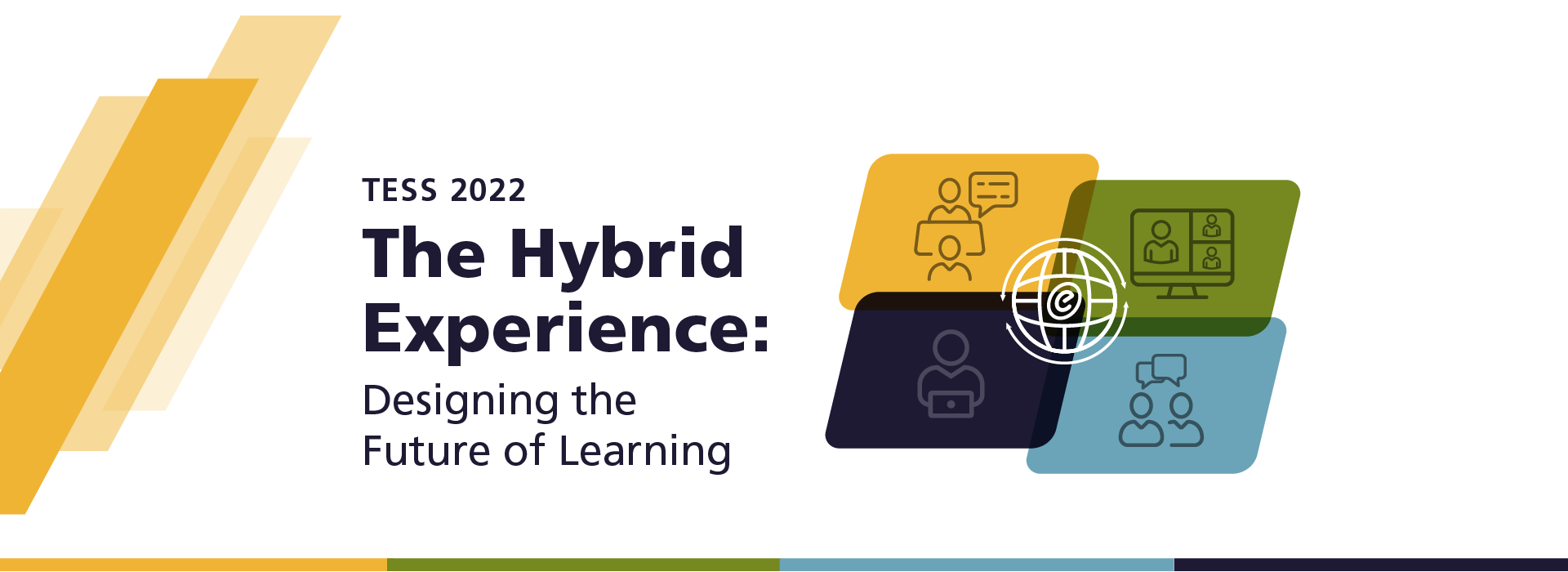
Entwined in Hybrid Design: The Dance Between Pedagogy and Technology with Dr. Tim Fawns
Dr. Tim Fawns presented his TESS 2022 keynote address “Entangled Pedagogy and Hybrid Design” on November 9th, 2022. Taking a sneak peek into his presentation, Dr. Fawns joined eCampusOntario for an insightful Q and A sharing his thoughts on technology, education, and the intricate dance that plays out between these two elements.
eCampusOntario: What can TESS attendees expect to bring to their own teaching practice from your presentation on Entangled Pedagogy?
Dr. Fawns: My hope is that Entangled Pedagogy gives them a way of seeing that informs educational design, practice and policy. Hopefully, a heighted appreciation of the risks and potential benefits of technology in relation to their specific educational situations, and how they might go about developing that appreciation further.
Give us your “elevator pitch” on your model of Entangled Pedagogy – what is it all about?
Entangled Pedagogy is an attempt to explain, in terms that can be understood by a reasonably wide audience, how educational activity and outcomes emerge from a complex combination of factors beyond instructional methods and technologies.
The pedagogy/technology dichotomy is too simplistic. We must move past ideas that one can drive the other and develop a more sophisticated appreciation of the roles of technologies, teaching methods, purposes, values and contexts so that we are better able to design, evaluate and develop educational practice. Entangled Pedagogy can also help us to see who is involved in these educational activities, and how.
You first joined University of Edinburgh in 2007 as an eLearning developer. In your view, what has had the greatest impact on the evolution of eLearning in the past 15 years?
Probably that paperclip assistant they used to have in Microsoft Word. Actually, viewing [the medium of] eLearning not as a set of technologies, but rather as an emergent activity. I think the biggest influencer has been the tumultuous relationship between educational institutions and technology providers.
There are often misalignments in purposes and values which, for me, have meant that we have struggled to get the best out of our collaborations.
You have a particular interest in complex views of how people integrate technology in educational practice. What first inspired this interest?
I suppose my interest in complex understandings of technology and education stems from my days as a learning technologist, before I became a lecturer in clinical education. Back then, lecturers would ask me for technical help with software and hardware without always knowing why they were using those technologies, and very often without much appreciation of implications relating to privacy, accessibility, inclusivity or ethics.
I also encountered a lot of resistance to technology, which meant that some educators were closed off to the potential benefits of knowing about how to factor technology into educational design.
In your work, you have mentioned that there is reciprocity between technology and pedagogy, two elements that participate in a “dance,” without one leading the other. Please tell us about the inception of this idea. Was there a moment when this theory just “clicked?”
The basis for the idea had been there for a long time, and was further developed when I was invited to write a paper called “Postdigital Education in Design and Practice” by Petar Jandric for his new journal Postdigital Science and Education. In working out my definition of postdigital, I realised that, for me, it captured this problematisation of the common separation in discourse of digital and non-digital activity.
After that, I began seeing more clearly the problem with people arguing that pedagogy should be prioritised over technology. I agree that technology should not be prioritised over what educators and students value in education, but it does not make sense to push technology into the background because it is an inevitable and fundamental part of educational practice, and has been even before digital technology was invented.
Therefore, we should take technology into account while also making sure that our designs and practice align with our purposes and values, and with the contexts of our teaching and of our students. I wrote a blogpost for the University of Edinburgh’s Teaching Matters blog called “Pedagogy and technology from a postdigital perspective” which made this argument. It was surprisingly popular, which motivated me to develop the idea further into a paper on what I called Entangled Pedagogy in an effort to capture the inseparability of all of these influencing factors.
View Dr. Tim Fawns’ TESS 2022 keynote on eCampusOntario’s YouTube Channel.
Starting his tenure at University of Edinburgh as an eLearning Developer in 2007, Dr. Tim Fawns is now a Senior Lecturer in Clinical Education at the University of Edinburgh. He is Co-Director of the online MSc Clinical Education, Director of the international Edinburgh Summer School in Clinical Education and runs a course in “Postdigital Society” for the Edinburgh Futures Institute.
Dr. Fawns maintains a PhD in Education, University of Edinburgh, Scotland, MSc e-Learning, University of Edinburgh, Scotland, and BMM (Multimedia and Graphic Design), Griffith University, Australia.
